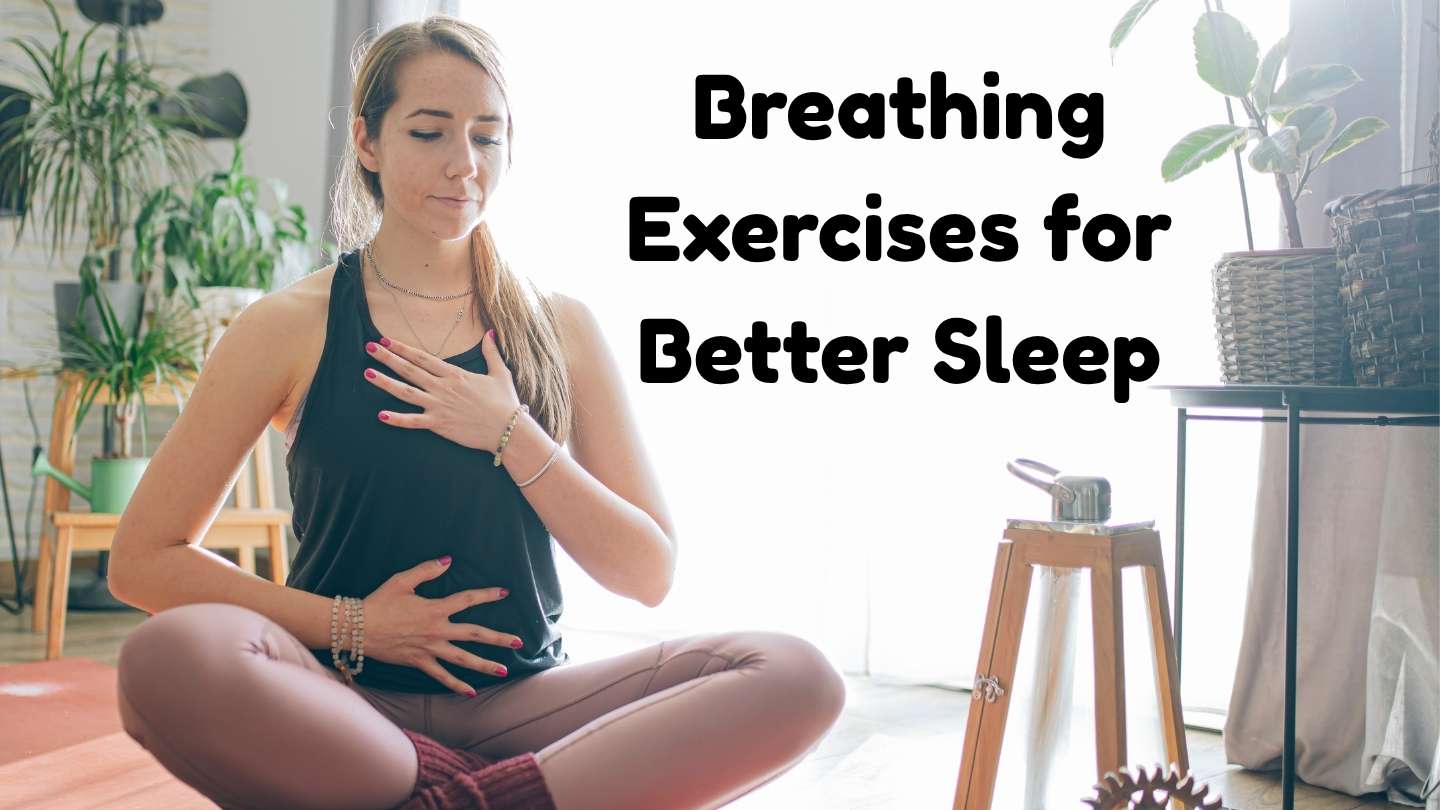Breathing Exercises for Better Sleep: Calm Your Mind & Fall Asleep Faster
Are you tossing and turning at night, struggling to fall asleep or stay asleep? You’re not alone. In our fast-paced, anxiety-filled world, getting quality rest has become increasingly difficult. Thankfully, there’s a natural and free solution you can try right now—breathing exercises for better sleep.
In this blog post, we’ll explore the best breathing techniques to improve sleep, reduce stress, and help you relax both your body and mind.
Why Breathing Exercises Help With Sleep
When done correctly, breathing exercises:
- Slow your heart rate
- Lower stress hormones like cortisol
- Activate the parasympathetic nervous system (your body’s rest-and-digest mode)
- Quiet racing thoughts
- Increase melatonin and help prepare the brain for sleep
These techniques are especially helpful for people who deal with insomnia, anxiety, restlessness, or wake up frequently at night.
Breathing Exercises for Better Sleep
1. 4-7-8 Breathing Technique
Created by Dr. Andrew Weil, this method is designed to bring your body into a deep state of relaxation quickly.
How to do it:
- Inhale through your nose for 4 seconds
- Hold your breath for 7 seconds
- Exhale slowly through your mouth for 8 seconds
- Repeat for 4–8 cycles
Benefits:
- Slows the heartbeat
- Relaxes muscles
- Reduces anxiety before bed
2. Box Breathing (Square Breathing)
Box breathing is used by Navy SEALs and athletes to stay calm and focused. It’s a powerful tool for mental clarity and stress relief.
How to do it:
- Inhale for 4 seconds
- Hold for 4 seconds
- Exhale for 4 seconds
- Hold again for 4 seconds
- Repeat 4–6 times
Benefits:
- Centers your thoughts
- Lowers stress quickly
- Eases racing mind before bed
3. Diaphragmatic Breathing (Belly Breathing)
Most people breathe shallowly. Deep belly breathing helps you slow down and triggers full-body relaxation.
How to do it:
- Place one hand on your chest, one on your belly
- Breathe in slowly through your nose, making your belly rise
- Exhale slowly through your mouth, feeling your belly fall
- Continue for 5–10 minutes
Benefits:
- Enhances oxygen flow
- Calms the nervous system
- Reduces sleep-disrupting anxiety
4. Alternate Nostril Breathing (Nadi Shodhana)
This ancient yogic breathing technique helps balance both hemispheres of the brain, calm the mind, and ease tension.
How to do it:
- Use your thumb to close your right nostril
- Inhale through the left nostril
- Close the left nostril with your ring finger and exhale through the right
- Inhale through the right, then switch again
- Continue for 5 minutes
Benefits:
- Balances mind and body
- Reduces mental clutter
- Promotes deeper sleep
5. Progressive Relaxation With Breathing
This technique combines breathing with muscle relaxation, making it effective for those with physical tension or insomnia.
How to do it:
- Lie down in bed
- Inhale and tense a muscle group (like your fists)
- Exhale and release the tension completely
- Move through your body — feet, legs, back, shoulders, jaw, etc.
- Breathe slowly and deeply throughout
Benefits:
- Relieves physical tension
- Helps body fully relax
- Prepares your mind for sleep
Must Read: How to Get Relief from Dry Cough at Night?
Tips for Making Breathing Exercises Work for You
- Practice nightly: Repetition builds habit and results
- Stay consistent: Choose one technique and try it for 7–10 nights
- Pair with sleep hygiene: Dim lights, cool room, no screens
- Use calm music or nature sounds to enhance relaxation
- Avoid caffeine and heavy meals before bedtime
What to Avoid at Night
- Shallow, fast breathing (can trigger anxiety)
- Overstimulating thoughts or activities
- Excessive screen time or blue light exposure
- Alcohol or nicotine, which disrupt sleep cycles
Final Thoughts
If you’re seeking a simple, natural way to fall asleep faster and sleep more soundly, start with your breath. These breathing exercises for better sleep are easy, effective, and can be done anytime—no equipment needed. They help regulate your mind and body, putting you into a calm, restful state naturally.
Whether you choose the 4-7-8 method, belly breathing, or box breathing, the key is consistency. Try these techniques for a few nights, and you’ll likely notice a big difference in how quickly and peacefully you drift off.








One Comment